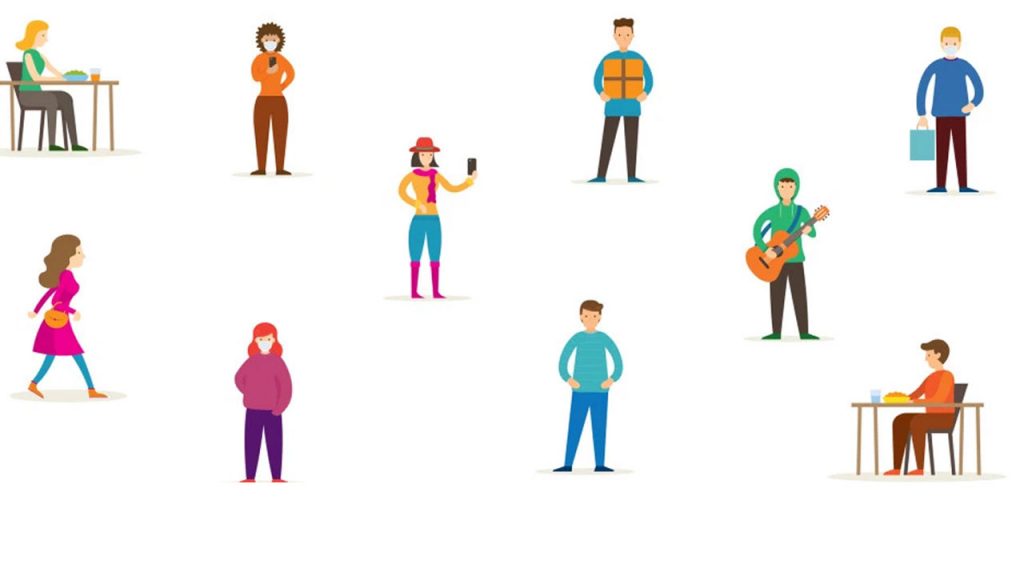
This article was first published in the Sunday Times of India, 22nd March, 2020.
I work in an early stage venture fund. As the Covid-19 crisis took hold, we reached out to our portfolio to check on how the virus was impacting them. We saw an interesting pattern emerge. Naturally, purely digital businesses, the ones that move ‘bits’ around, were doing well, such as edtech or content plays. But so were businesses that move ‘atoms’, such as grocery e-commerce sites that were having their best weeks ever. But there were some ‘atom’ businesses such as a real estate tech platform, or a wedding tech play that were clearly shook.
Given the above, how should we understand Covid-19’s impact on businesses? It clearly favours most digital businesses, though not all, and it also favours some physical or atom businesses, including e-commerce or even hand sanitisers. Given this, a simplistic digital vs physical or bits vs atoms framework isn’t a good lens to view Covid-19’s impact. Is there an alternative framework? Yes.
All businesses hit by Covid-19 have one factor in common: they bring people together in near proximity — such as travel hubs or airports, gyms, offline educational classes etc. Even if you are a purely digital firm, say online travel ticketing or a rideshare service, your customer will consume the service you are selling in proximity to another customer. And if there is hesitation to consume the product or service, then your sales take a hit too. Uber and Ola have seen rides drop over a third since the crisis.
There isn’t a word in English to describe such businesses — where the consumption of the product eventually happens in the physical presence of other people. I suggest ‘proximate’ as a moniker for such businesses — school education, restaurants, real estate services, travel and hospitality, and so on. Covid-19 has impacted proximate businesses most. Then there are businesses where the final product is consumed singularly — without other people being present physically. Online education, digital payments, video conferencing, e-commerce fit the bill. Let us call them singular businesses. Covid-19 has been extremely beneficial to such businesses, as there is no threat to safety while consuming these products or services.
In addition to singular businesses, Covid-19 has seen two broad categories of businesses boom — first, healthcare products and especially cleansing agents such as sanitisers; second, products that support remote working or living. Video conferencing is one. Zoom, the biggest beneficiary of the Covid crisis, saw its market capitalisation overtake Uber briefly. And it is not just Zoom: almost all players in the video conferencing space have seen massive jumps in usage. We are also beginning to see products which improve communication among remote workers. And of course, if you are stuck at home for long, then video streaming services such as Netflix are a big help.
How will online products evolve in a post-Covid world? First, we will see more social components sprinkled into ‘singular’ products. Take online education. By adding gamification elements such as leaderboards, or enabling interactions between users, you make the product more fun to use as well as drive better engagement. Or take netflixparty – an ‘unofficial’ chrome extension to watch Netflix with your friends. Second, there is the trend of proximate products moving to become singular. A great example of this is how gyms are using Facebook live or Zoom to livestream their classes, thereby helping fitness services, previously consumed physically in a group setting, become a solo activity, pursued through connected devices.
The fitness industry has been an innovator here, launching products such as Peloton (cycle), Tonal (weight training), Hydrow (rowing) etc. All of them are single-person use devices for the home that are internet connected and interactive. As we have seen with physical classes moving online, and gyms moving to connected devices, there is a framework for going virtual. Provide a product (app/device) for powering individual consumption, but make the experience social (leaderboards, messaging) and synchrononous. Let us call it ‘singularisation’.
So, where all could such ‘singularisation’ apply? What other proximate activities could go singular and succeed in a post-Covid world? Apart from education and fitness, we could see religious worship and music or artistic performances, both presently consumed in group setting, getting singularised. Imagine a device – a screen or even an app that allowed you to join for worship while being aware of and being able to interact with fellow worshippers, or even to join them for group prayers.
Welcome to the post-Covid world. Where the products are singular (or single-serve), social and streamed.
